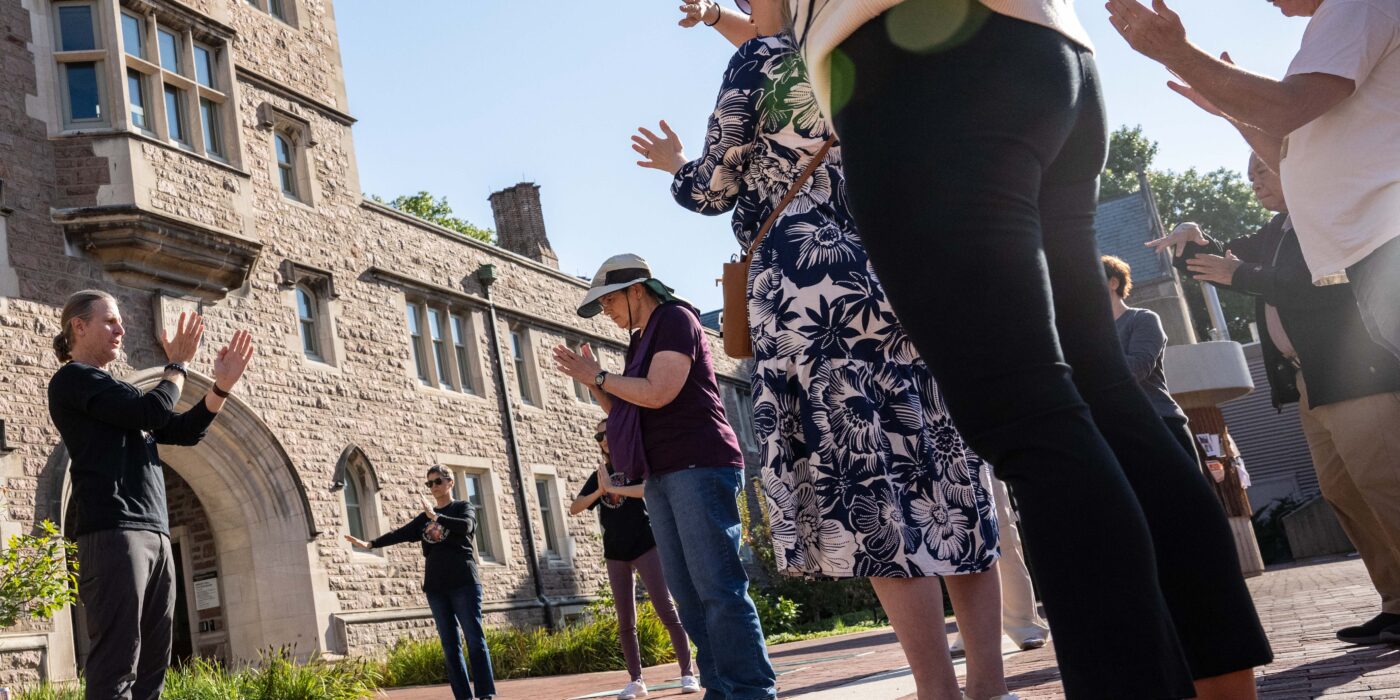Mindfulness-based approaches are mental health practices intended to ground people, help them focus attention, and teach them how to think through overwhelming emotions and problems, but that is just the start. The more people are taught ways to better handle stress, the better protected they may be from the physiological problems that stress produces, including dementia.
A new Washington University in St. Louis research project funded by a National Institutes of Health grant will focus on the potential of mindfulness to enhance cognitive health in Latinx older adults at risk for Alzheimer’s disease. It’s just one of the ways WashU is studying mindfulness practices and how they can impact both individuals and whole communities.
The project is a part of WashU’s Mindfulness Science and Practice cluster, which kicked off Mindfulness Week late September. The cluster represents an interdisciplinary collaboration between Todd Braver, a professor in psychological and brain sciences in Arts & Sciences, and Diana Parra Perez, an assistant professor at the Brown School, along with two other co-leads, Eric Dane, associate professor of organizational behavior at Olin Business School, and Ron Mallon, professor of philosophy and of philosophy-neuroscience-psychology in Arts & Sciences.
Braver notes that older Latinx adults are a vulnerable and understudied population, which might mean there is potential to put in place even more “protective factors” by teaching this group mindfulness practices.
“We don’t know whether mindfulness can do that,” Braver cautioned, “but we want to test that possibility.”
Despite the ubiquity of mindfulness approaches spreading through institutions, scientific research on its impact is just ramping up.
Parra Perez’ previous research has included developing an adjusted version of mindfulness practices to fit the Latinx population needs, including adapting the lessons to Spanish language but also adding more cultural context, like the experience of immigration and spiritual and collective references that bring meaning and connection to the work.
According to Parra Perez, mindfulness can have more impact through shared experiences. A sense of community can be especially effective at helping vulnerable groups like new immigrants who are often isolated and separated from family. “Mindfulness is about tapping into both modern best practices and ancient traditions to use those to help us as a society look at where we are,” she said.
The NIH funded two-year grant will provide $325,000 in direct funding per year to run the trainings. The researchers will recruit a target sample of 60 Latinx older adults, with half randomized to the mindfulness-based program and the other half going to the wait-list control group. The training class size will be limited to 15 to ensure engagement and trust between participants in group-sharing activities.
The mindful potential
Western medical science has been adapting Eastern meditation practices for decades and mindfulness approaches emerged from that trend.
One of the most researched mindfulness-based programs is MBSR (Mindfulness-Based Stress Reduction), created by Jon Kabat Zinn, professor of medicine emeritus at the University of Massachusetts Medical School. The practice was developed in a particular cultural and therapeutic context that was geared toward white, upper-middle-class populations, Braver noted.
“It’s not that mindfulness is one size fits all,” he added, noting that it is meant to be adapted to work in different cultural contexts.
The inconsistent way mindfulness can be employed adds to the challenge of understanding its biological impacts. Meta analysis of studies on chronic pain find that mindfulness practices can have significant improvements for pain, depression and quality of life but that needs to be confirmed in more randomized controlled clinical trials, noted study authors.
In similar research on how these practices might affect the immune system, study authors can see some evidence that mindfulness meditation influences biological processes involved in aging and disease by tuning down multiple stress signaling pathways in the body.
Meanwhile Parra Perez has been adapting and optimizing her practices for Latinx communities since 2020. Mindfulness research is not about proposing a panacea for public health problems but enabling individuals and communities to take logical steps toward improvement.
This kind of work can build the capacity for internal growth, Braver said, adding that it allows people to notice things they might not have seen otherwise. With mindfulness practice, individuals can start to see the connections between problems they face and societal challenges overall that they might not notice because “typically our emotions get in the way,” Braver said.
Shame, fear, loneliness, these emotions can make people shut down on finding a solution to life’s problems. Part of the advantage of mindfulness practices is it can remind us we are not alone in that challenge, Parra Perez said.
“This is a practice that reminds us constantly about how connected we really are,” she said.



